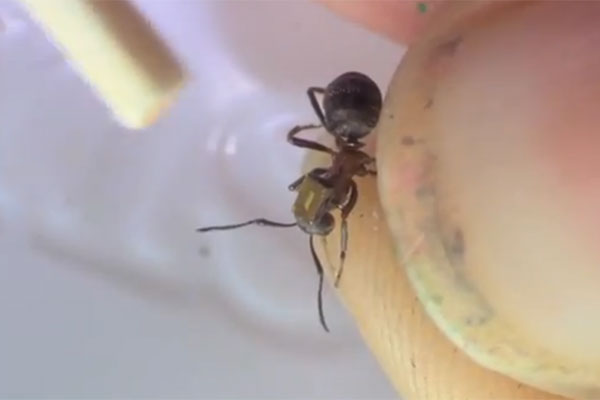1,000 English Ants to Receive Radio Tags

About 1,000 northern hairy wood ants are expected to have tiny radio tags, about 0.04 inches (1 millimeter) long, attached to their bodies, allowing researchers to track their movements on a protected English estate.
The wood ants, which get their name from the "eyebrows" visible through a microscope, live in colonies housed within nests connected by trails worn into the ground by years of ant traffic. The biologist doing the work, Samuel Ellis of the University of York, intends to examine how the ants interact with one another.
The results are expected to help staff at the Longshaw Estate in Derbyshire manage the estate — a natural and archaeological site —with the ants' needs in mind.
"I think this is a world first. It has not been done in the wild before," said Ellis in a video produced by the U.K. National Trust, which manages the estate. [See Photos of the Tagged Wood Ants]
Ellis is not certain how long they will stay attached to the insects.
"The tags act like a bar code," he said in the video. "It gives each ant an individual identity and what this means is you can see which ants are going where and how individual ants interactions work together to make the colony long behaviors."
An estimated 50 million hairy wood ants, Formica lugubris, inhabit the estate. They are the largest species of ants native to the British Isles with workers reaching up to 0.4 inches (10 mm) long. To get food for their young, the ants gently stroke sap-sucking aphids, which then produce honeydew; in return, the ants protect these aphids.
Get the world’s most fascinating discoveries delivered straight to your inbox.
The ants defend themselves from predators by spraying smelly, vinegar-like formic acid. Some birds, like Jays and Green Woodpeckers, use the formic acid spray as a cleansing agent to get rid of parasites, according to the University of York.
Follow Wynne Parry on Twitter @Wynne_ParryorLiveScience @livescience. We're also on Facebook & Google+.



